This accident didn’t end in tragedy, but it is a rather graphic explanation of what a displaced runway threshold is, and why it’s there.
In very simple terms, the Runway Threshold is the beginning of the runway. In all but the smallest runways, the threshold is marked using a series of white stripes, the number of which indicates the width of the runway. The actual threshold is the solid white line, just short of the stripes. But in many cases, the paved surface extends beyond this point.
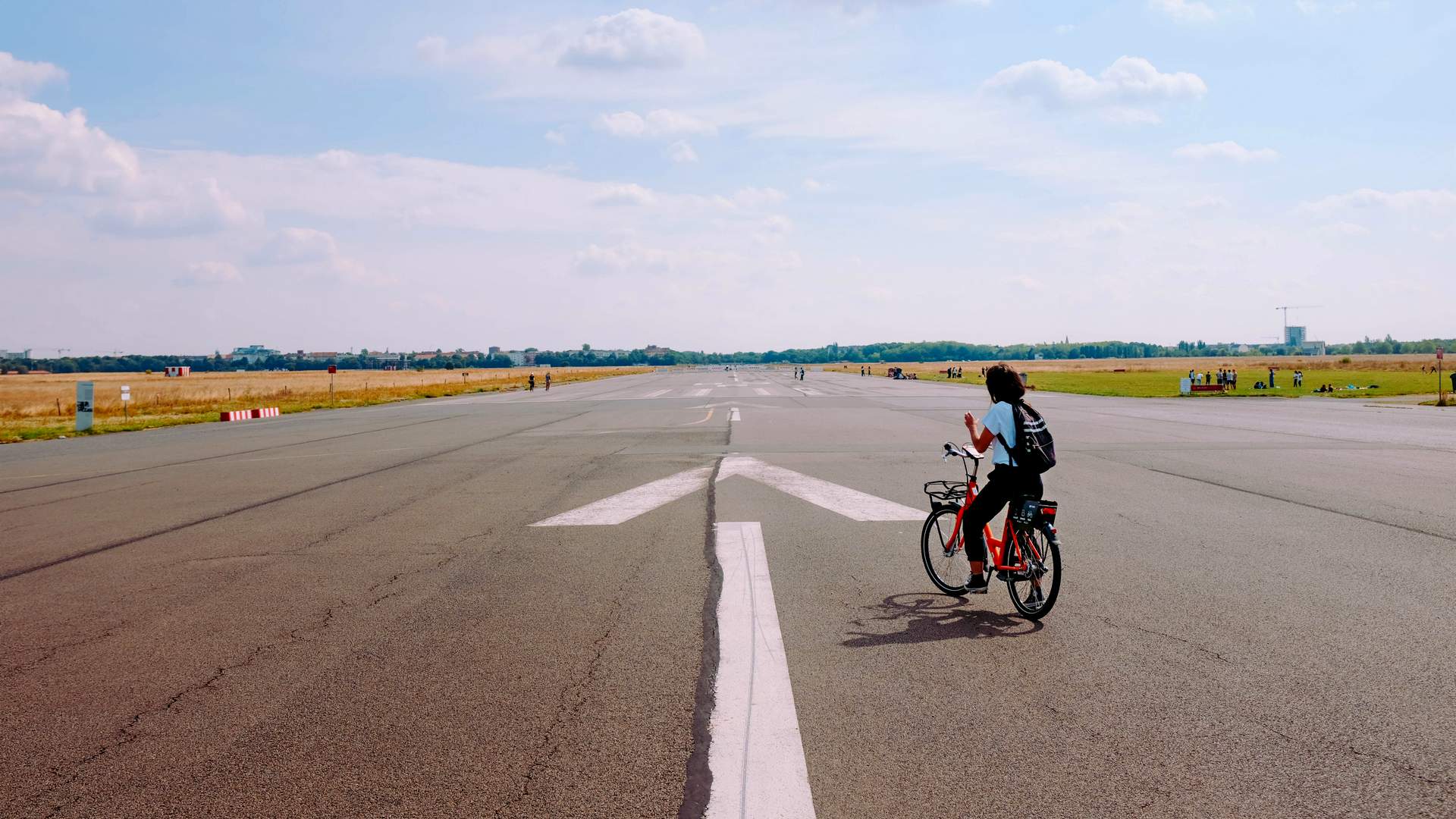
There are a few possible reasons for this. Some runways have turnaround areas, that may or may not be beyond their threshold. In some cases, what looks like a displaced threshold is an overrun area, that aircraft don’t normally use.
A runway with a displaced threshold typically has one or more arrows, defining this additional paved area. Pilots can taxi and commence their takeoff runs in this area if they wish. But they should not land on it.
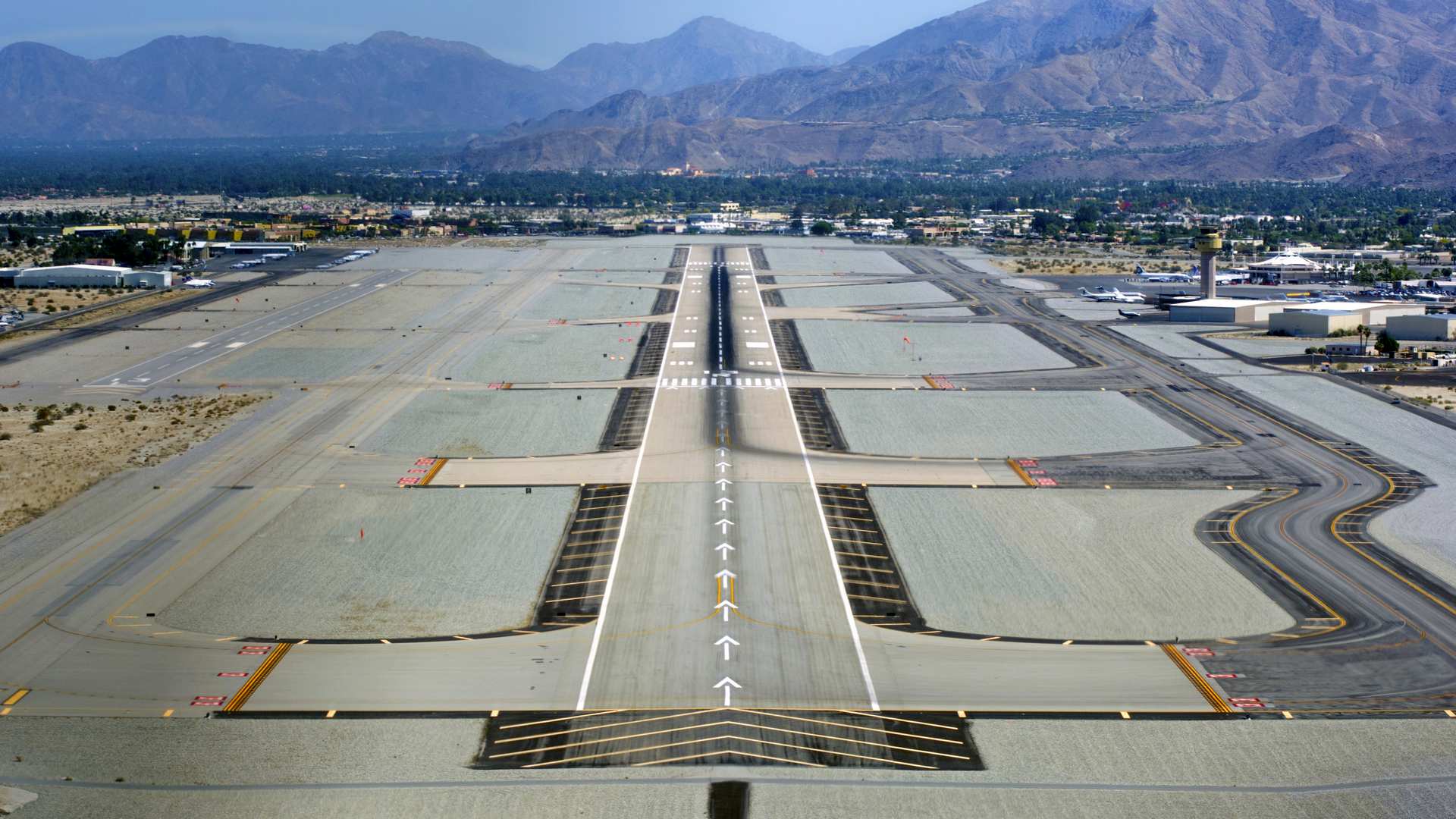
There are several possible reasons for this. In some large airports, a runway may have a displaced threshold for noise abatement reasons, i.e. so that aircraft on final don’t fly too low over residential buildings.
But more often, these extended thresholds are there so that landing aircraft don’t get too close to various obstacles. In most cases, those obstacles might be obvious, like trees, structures, or power lines.
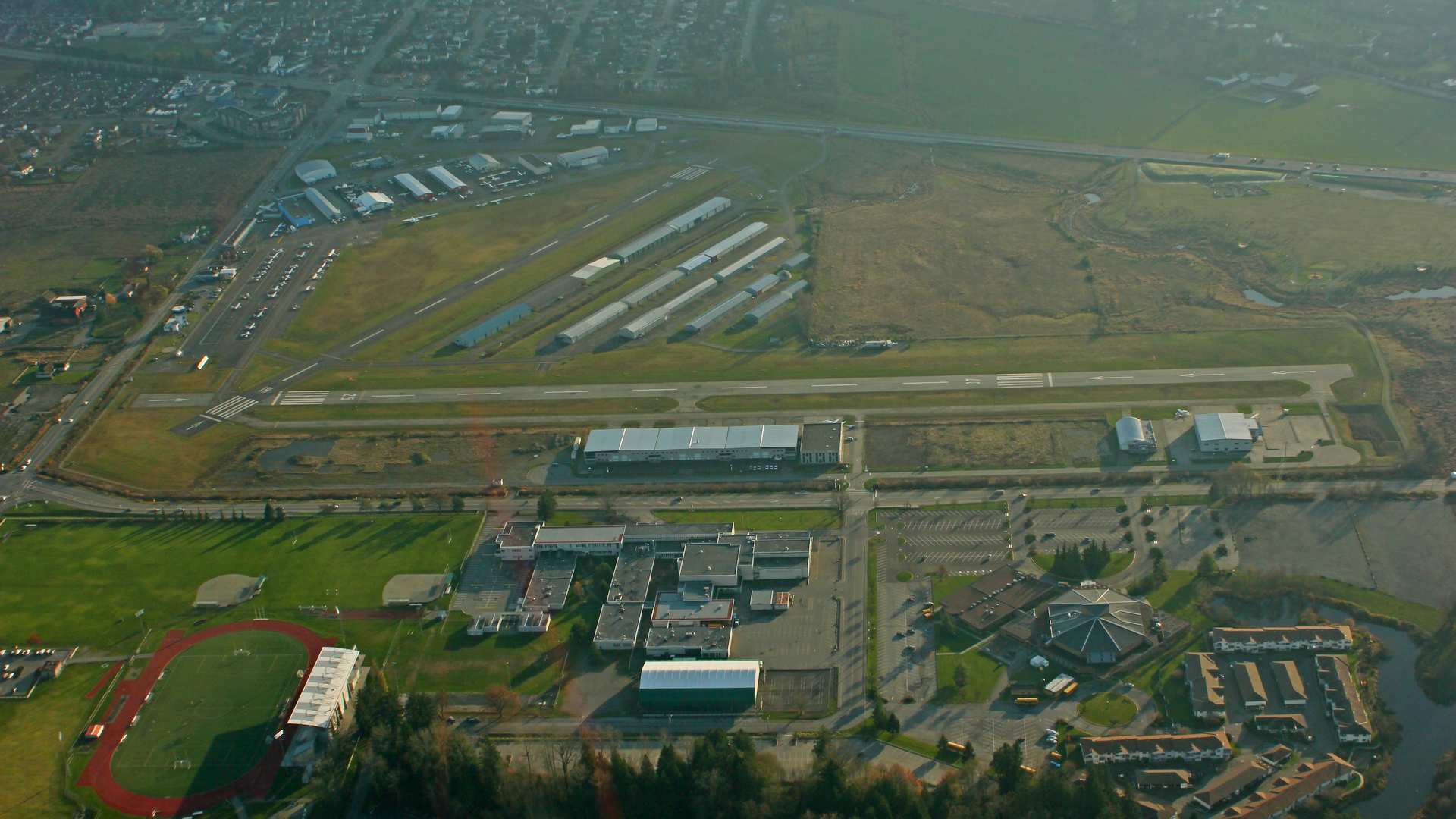
A Displaced Runway Threshold, A Cessna, And A Pickup Truck
In other cases, these obstacles might be less permanent, like passing trucks or cars on a road. And this brings us to an accident that happened back in May this year, at Langley Regional Airport (CYNJ) in British Columbia, Canada.
Canada’s Transportation Safety Board (TSB) recently released its final investigation report on this event. It involved a Cessna 182P, with registration C-GIDY, with a pilot and a passenger on board. The two occupants had taken off from Langley earlier that afternoon and were coming back to land.
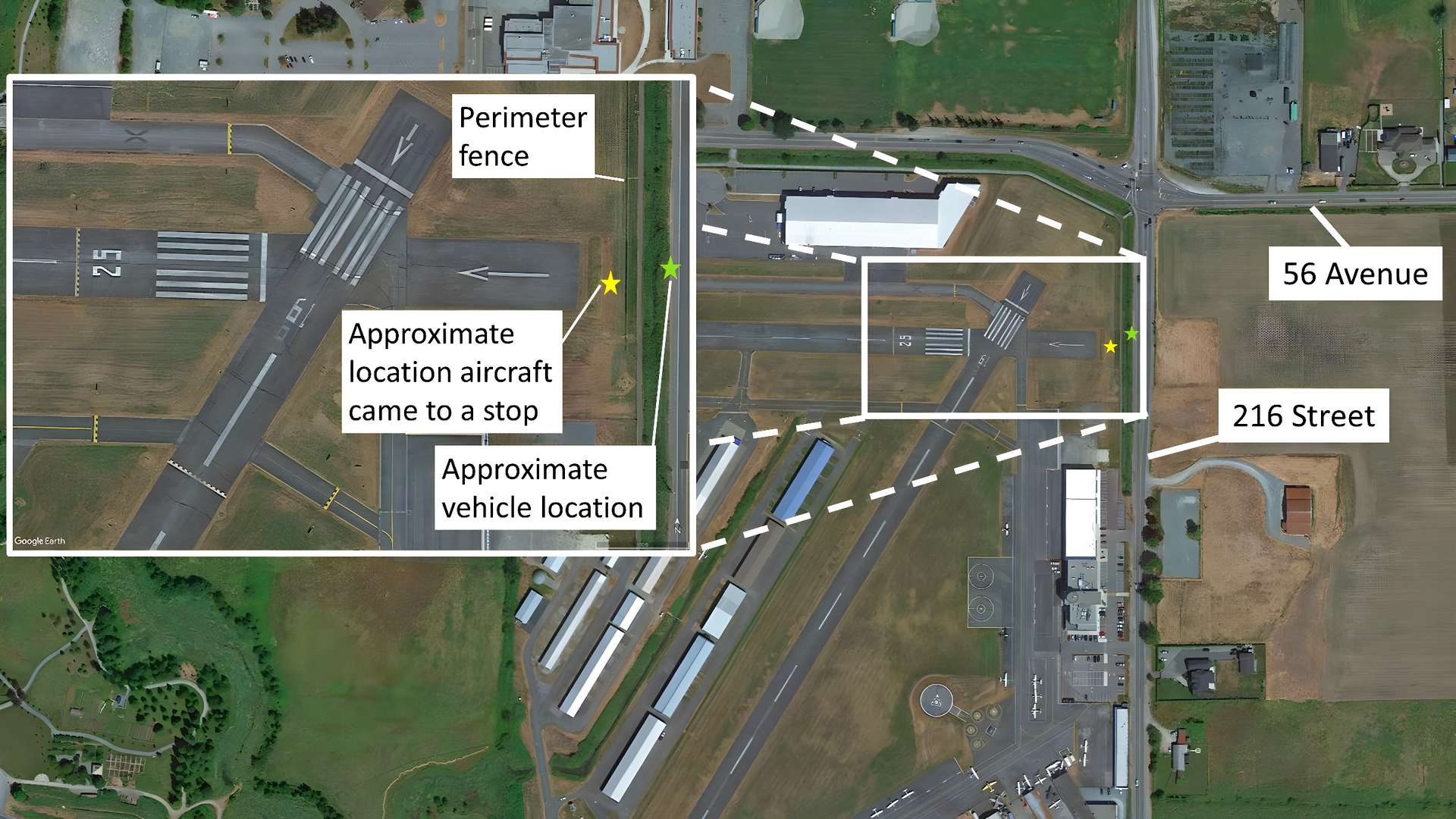
Just after 3 PM local time, the pilot of the Cessna set up an approach on Langley’s runway 25, which has a displaced threshold. The airport has a low perimeter fence around the threshold of this runway. There are no permanent structures or other obstacles near the runway.
However, 216 Street runs along the airport perimeter. People at the airport observed the Cessna making a straight-in approach to runway 25, being rather low. Before crossing the airport perimeter, the aircraft hit a passing pickup truck – that happened to belong to the municipality of Langley.
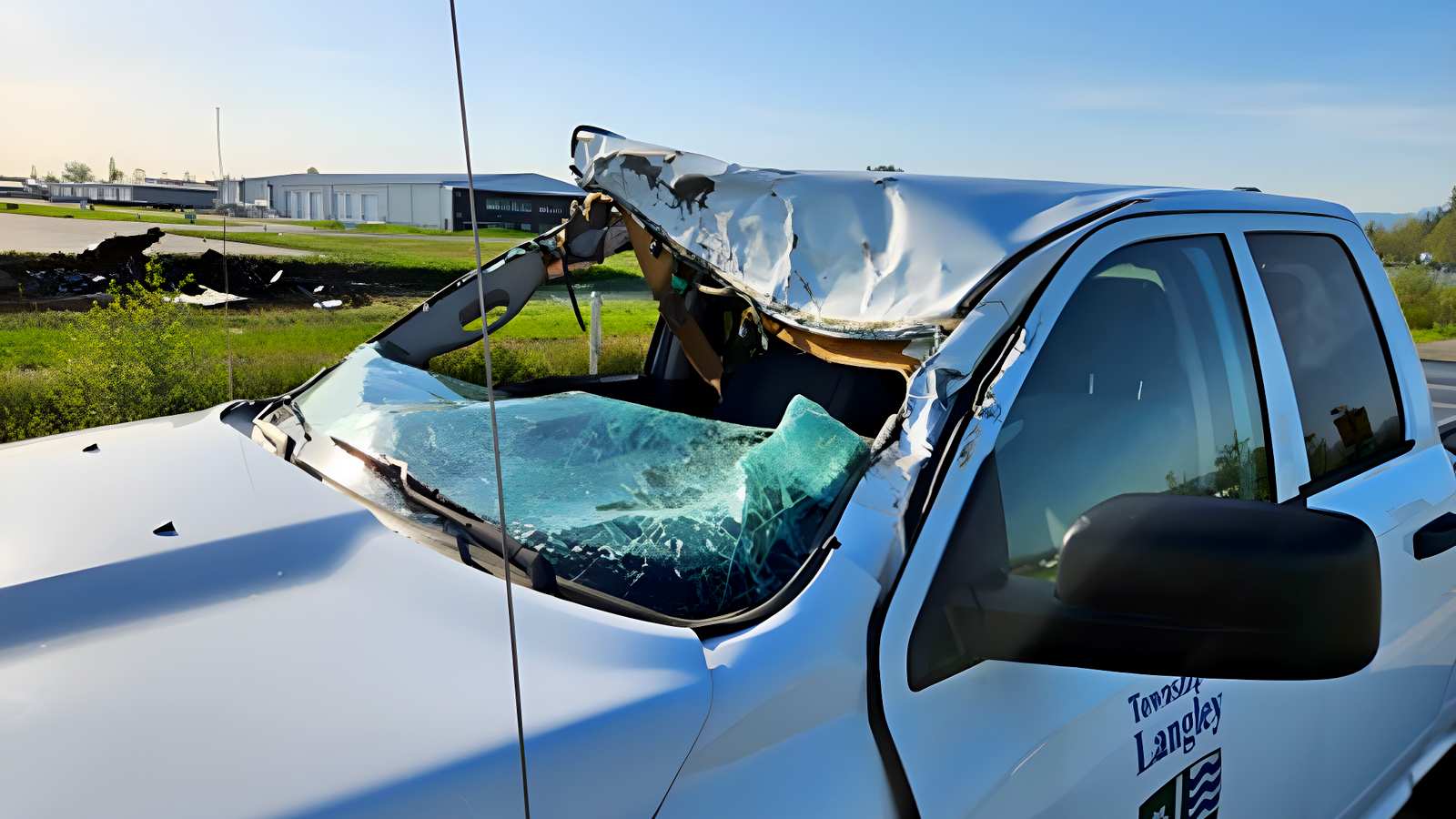
After the impact, the Cessna yawed to the right and hit the airport perimeter fence. It then slid for about 30 feet (9.1 meters) along the ground, coming to a halt against a berm, just short of the paved runway surface.
The Aftermath
The driver of the pickup truck was the sole occupant and wasn’t seriously hurt. The aircraft’s passenger also didn’t suffer serious injuries and was able to exit it without assistance. However, the pilot couldn’t do the same. A bystander and the passenger helped the pilot off the aircraft.
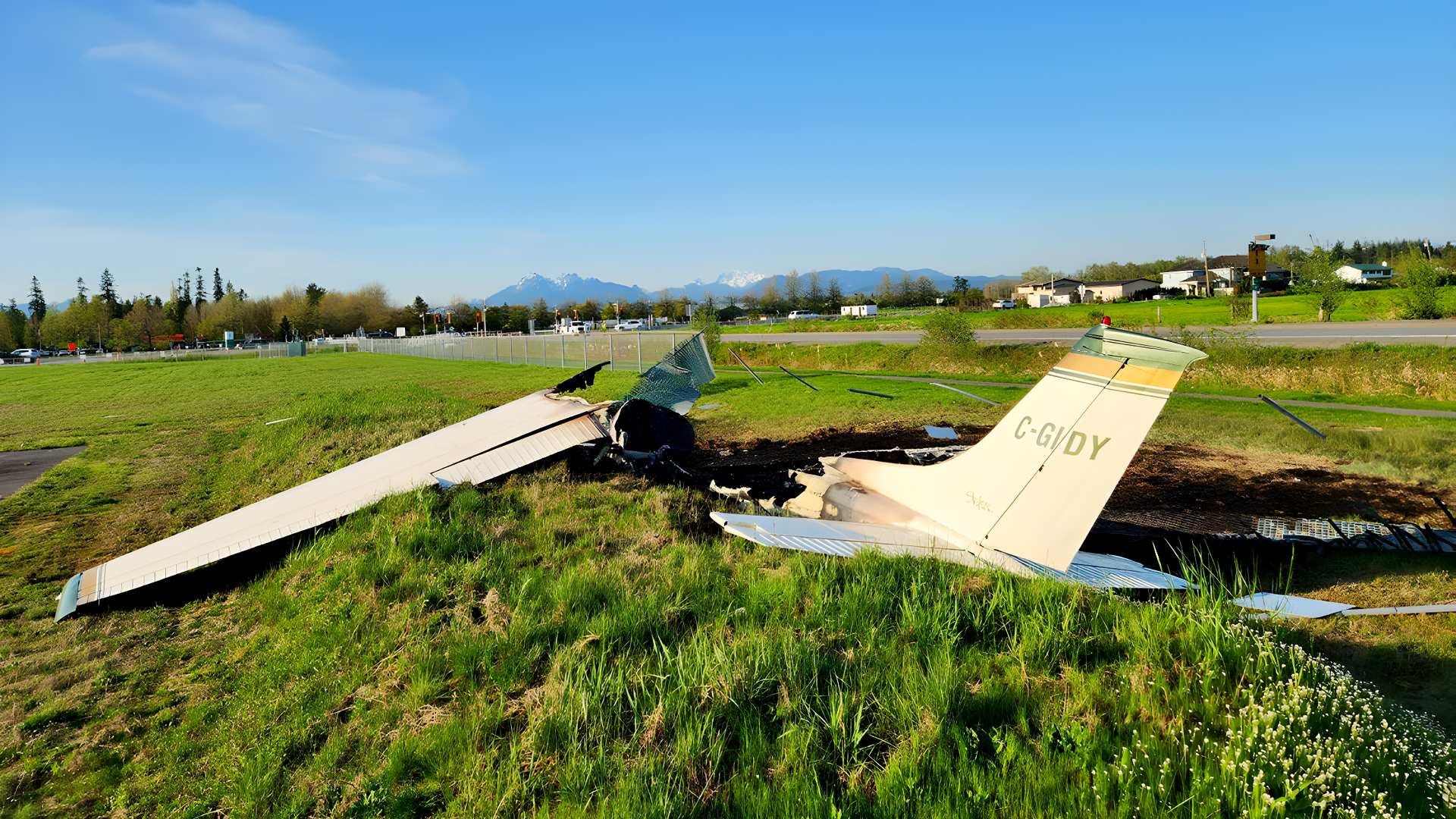
A fire broke out, which destroyed much of the aircraft’s structure. Responders airlifted the two aircraft occupants to hospital, while a ground ambulance picked up the driver. In its report, the TSB stated that this aircraft had 4-point restraints, which likely helped limit the occupants’ injuries.
In its report, the TSB explains that runway 25 has a displaced threshold of 343 feet (104.5 meters). An aircraft flying a typical three-degree approach, and aiming to land on the displaced threshold of the runway, would fly over 216 Street at a height of approximately 40 feet (12.2 meters).
Note that aircraft should land well beyond the threshold of a runway, not on it. The TSB states that if an aircraft makes the same three-degree approach but instead aims to touch down at the very beginning of the paved surface, it would be over the road at a height of just 10 feet (3 meters).
The TSB ends its report with the following statement:
“Runway thresholds are often displaced to ensure that the approach slope is clear of obstacles. Therefore, it is important that pilots aim to touch down beyond the displaced threshold to help maintain obstacle clearance.”
Source: TSB Report




3 comments
Andrew
I am confused, this article says “The aircraft’s passenger also didn’t suffer serious injuries”
and then says “Responders airlifted the two aircraft occupants to hospital”
This article seems to contain contradictory statements.
[email protected]
How does the displaced threshold fit into the calculation of the runway length?
Yu
This article finally helps me to understand the role of the displaced threshold!